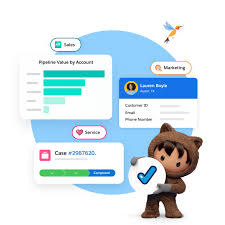Is Your Email Strategy Working? These Metrics Tell the Truth
Email marketing isn’t a “set it and forget it” channel—it’s a data-driven science. With evolving privacy rules (like Apple’s Mail Privacy Protection) and shifting consumer behaviors, tracking the right KPIs is crucial to optimizing engagement, conversions, and ROI.
Here are the 10 most critical email marketing KPIs to measure performance—and how to use them to refine your strategy.
1. Delivery Rate
What it measures: Percentage of emails that actually reach inboxes.
Formula: (Emails Sent – Bounces) / Emails Sent
Why it matters: If your emails aren’t being delivered, nothing else matters. Low delivery rates? Check for spam filters, authentication issues (SPF/DKIM/DMARC), or poor list hygiene.
2. Click-Through Rate (CTR)
What it measures: Percentage of recipients who clicked a link in your email.
Formula: Unique Clicks / Delivered Emails
Why it matters: Indicates content relevance and CTA effectiveness. A high CTR means your message resonates; a low CTR suggests weak offers or poor email design.
3. Clicks by Link
What it measures: Which links get the most engagement.
Why it matters: Not all clicks are equal. If subscribers only click your unsubscribe link or a secondary CTA (instead of your main offer), you need to restructure your email flow.
4. Event Lag (Time-to-Click)
What it measures: How quickly recipients engage after receiving your email.
Why it matters: Fast clicks = urgent, compelling content. Slow clicks = your email got buried or lacked urgency. Use this to refine subject lines, send times, and preheaders.
5. Bounce Rate (By Type)
What it measures: Percentage of emails rejected by the recipient’s server.
Types:
- Hard bounces (invalid emails) → Scrub your list.
- Soft bounces (full inbox) → Retry later.
- Block bounces (spam filters) → Fix authentication.
Why it matters: High bounce rates hurt sender reputation and deliverability.
6. Unsubscribe & Complaint Rates
What they measure:
- Unsubscribe rate: % who opt out.
- Complaint rate: % who mark as spam.
Why they matter: Sudden spikes signal list fatigue, irrelevant content, or excessive frequency. Benchmark against industry averages (e.g., 0.1–0.3% unsubscribe rate is typical).
7. Web Traffic & Conversions
What it measures: How many email clicks lead to desired actions (purchases, sign-ups, downloads).
Pro tip: Use UTM parameters to track email-driven conversions in Google Analytics.
Why it matters: The ultimate measure of ROI. If clicks don’t convert, your landing page or offer may be the issue.
8. Campaign vs. Email Performance
What it measures: How individual emails perform within broader campaigns.
Why it matters: Some emails (e.g., welcome series) may outperform others (promotional blasts). Compare CTR, conversions, and unsubscribe rates to identify winning templates.
9. List Growth Rate
What it measures: How fast your subscriber list is expanding.
Formula: (New Subscribers – Unsubscribes) / Total List Size
Why it matters: Stagnant lists = missed opportunities. Boost growth with lead magnets, opt-in incentives, and cross-channel promotions.
10. Most & Least Engaged Subscribers
What it measures: Who opens/clicks regularly vs. who ignores your emails.
Why it matters:
- Engaged users: Target them for loyalty programs or upsells.
- Inactive users: Try re-engagement campaigns or prune them to improve deliverability.
Key Takeaway: Test, Analyze, Optimize
Email success isn’t static—it’s a cycle of testing, measuring, and refining. Start with these 10 KPIs, but always:
✅ A/B test subject lines, CTAs, and send times
✅ Segment your lists for hyper-relevant messaging
✅ Clean your lists regularly to maintain deliverability
“Your email metrics are a mirror—they show exactly what’s working (and what’s not). Stop guessing. Start measuring.”
Need help tracking these KPIs? Contact Tectonic for marketing measurement assistance.
#EmailMarketing #DigitalMarketing #KPIs #MarketingStrategy #ROI













